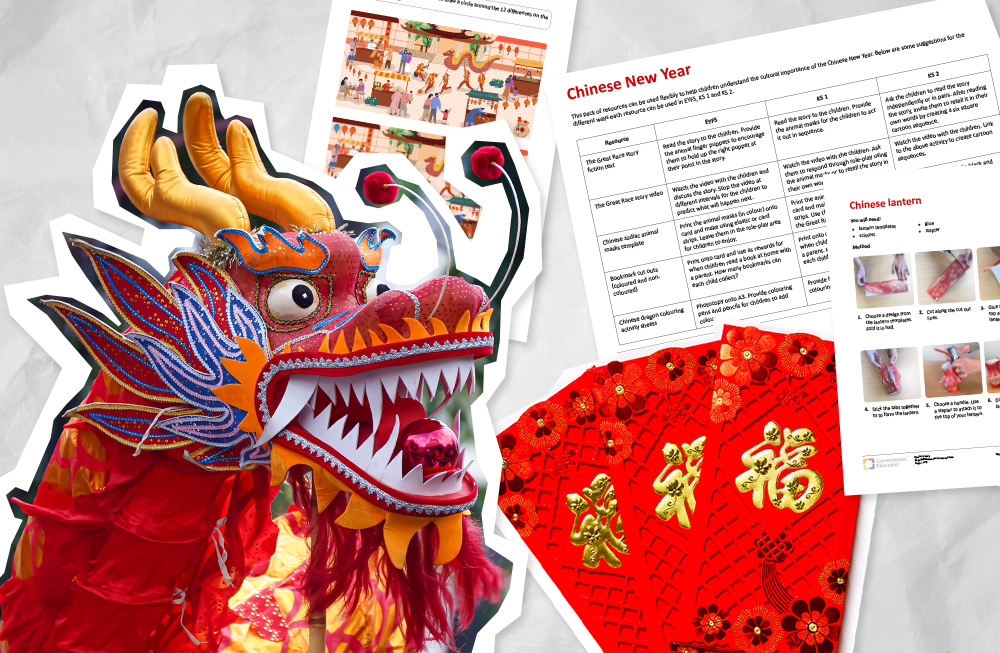Celebrating Chinese New Year: A Festival of Joy and Renewal
Chinese New Year, also known as the Spring Festival, is one of the most significant and joyous celebrations in Chinese culture. The festival marks the beginning of the lunar calendar year and is a time for family, reflection, and renewal.
Cornerstones Resources
To help you teach your class all about Chinese New Year, we have put together a quality Chinese New Year Resource pack, which you can access for free on Quick Teach. Click the button below to get started.
Why is teaching Chinese New Year important to primary schools in England?
As every primary teacher knows, understanding and appreciating the great diversity of British society is integral to the development of children’s cultural capital.
Part of developing children’s cultural capital is teaching them about the celebrations and traditions of other countries and understanding the beliefs upon which they are based. With many families of Chinese ethnic groups living and learning in Britain, it is essential to represent the important festivals that these families may celebrate.
Moreover, it presents a fantastic opportunity to welcome the Chinese community and children’s family members into school to share their knowledge and experiences of such events.
When is Chinese New Year Celebrated?
The date of Chinese New Year varies each year, as it is determined by the lunar calendar. It typically falls between January 21 and February 20. Each year is associated with one of the 12 animals of the Chinese zodiac, adding a unique character to each celebration.
Traditions and Festivities
Chinese New Year is a time of customs and activities. Here are some key highlights:
- Family Reunions: The festival revolves around family gatherings. Loved ones travel from near and far to share meals, making it one of the most significant homecoming occasions of the year.
- Spring Cleaning: Homes are thoroughly cleaned before the New Year to sweep away bad luck and welcome good fortune. This practice symbolizes a fresh start for the year ahead.
- Red Decorations: Red is the colour of luck and prosperity in Chinese culture. Houses are adorned with red lanterns, couplets, and paper cuttings, creating a festive environment.
- Feasting: The reunion dinner on Chinese New Year’s Eve is a highlight and features dishes like dumplings, fish, rice cakes, and spring rolls, each symbolising wealth, happiness, or longevity.
- Fireworks: Fireworks are believed to ward off evil spirits.
The Spirit of the New Year
Chinese New Year is a time to express gratitude, resolve past grievances, and look forward to new beginnings. People exchange hongbao (red envelopes) filled with money, symbolising blessings and good wishes.
Our free Chinese New Year resource pack
As part of our drive to promote diversity and inclusion in the curriculum, to boost cultural capital, and to help you celebrate the Chinese New Year in your school, our Chinese New Year resource pack includes quality resources such as:
- a video of the Great Race story explains how each animal is assigned to the Chinese calendar
- spot the difference sheets
- Chinese lantern instructions
- Fortune cookie instructions
- Chinese New Year themed maths problems
- Animal masks
- Finger puppets
- Dragon puppets
And much more.
Our Chinese New Year resource pack is available to download on Quick Teach. Click the button below to sign up for you free trial and download.
Happy Chinese New Year!
新年快乐 (Xīn Nián Kuài Lè)!


